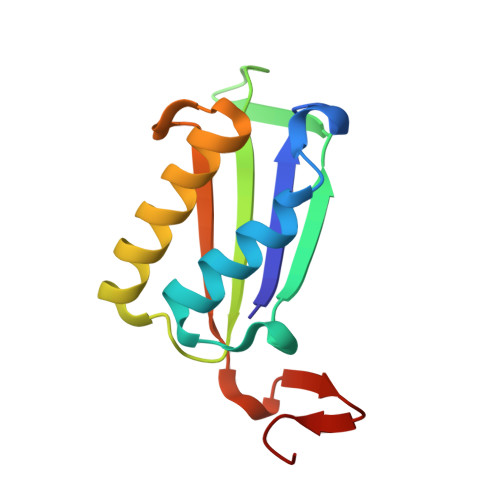Drug Repositioning and Pharmacophore Identification in the Discovery of Hookworm MIF Inhibitors.
Cho, Y., Vermeire, J.J., Merkel, J.S., Leng, L., Du, X., Bucala, R., Cappello, M., Lolis, E.(2011) Chem Biol 18: 1089-1101
- PubMed: 21944748
- DOI: https://doi.org/10.1016/j.chembiol.2011.07.011
- Primary Citation of Related Structures:
3RF4, 3RF5 - PubMed Abstract:
The screening of bioactive compound libraries can be an effective approach for repositioning FDA-approved drugs or discovering new pharmacophores. Hookworms are blood-feeding, intestinal nematode parasites that infect up to 600 million people worldwide. Vaccination with recombinant Ancylostoma ceylanicum macrophage migration inhibitory factor (rAceMIF) provided partial protection from disease, thus establishing a "proof-of-concept" for targeting AceMIF to prevent or treat infection. A high-throughput screen (HTS) against rAceMIF identified six AceMIF-specific inhibitors. A?nonsteroidal anti-inflammatory drug (NSAID), sodium meclofenamate, could be tested in an animal model to assess the therapeutic efficacy in treating hookworm disease. Furosemide, an FDA-approved diuretic, exhibited submicromolar inhibition of rAceMIF tautomerase activity. Structure-activity relationships of a pharmacophore based on furosemide included one analog that binds similarly to the active site, yet does not inhibit the Na-K-Cl symporter (NKCC1) responsible for diuretic activity.
Organizational Affiliation:
Department of Pharmacology, Yale University School of Medicine, New Haven, CT 06520, USA.


















